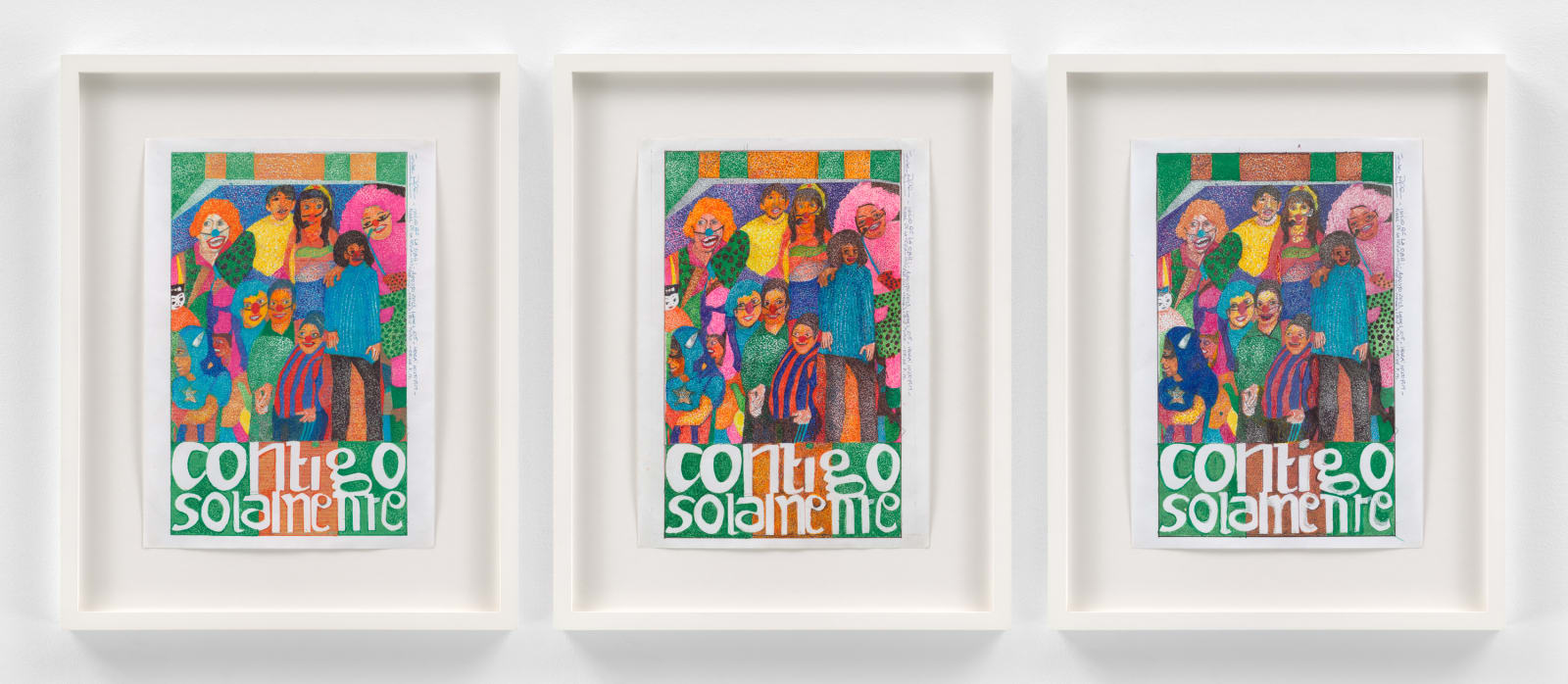-
Open a larger version of the following image in a popup:
 Teresa Burga: Dibujos (1974–2019), Alexander Gray Associates, Germantown (2022)
Open a larger version of the following image in a popup:
Teresa Burga: Dibujos (1974–2019), Alexander Gray Associates, Germantown (2022)
Open a larger version of the following image in a popup: Teresa Burga: Dibujos (1974–2019), Alexander Gray Associates, Germantown (2022)
Teresa Burga: Dibujos (1974–2019), Alexander Gray Associates, Germantown (2022)
Teresa Burga
Untitled (contigo...) final de la obra - octuber 2013 - viernes 18 - hora: - 08:06 P.M., 2013In 3 parts: felt tip pen, fineliner, pencil and ballpoint pen on paper; felt tip pen on printout; felt tip pen on printout11 1/2 x 8 1/4 in each (29.2 x 21 cm each)
16 1/4 x 13 x 1 3/8 in framed each (41.3 x 33 x 3.5 cm framed each)Series: =Signed and dated on rectoFurther images











